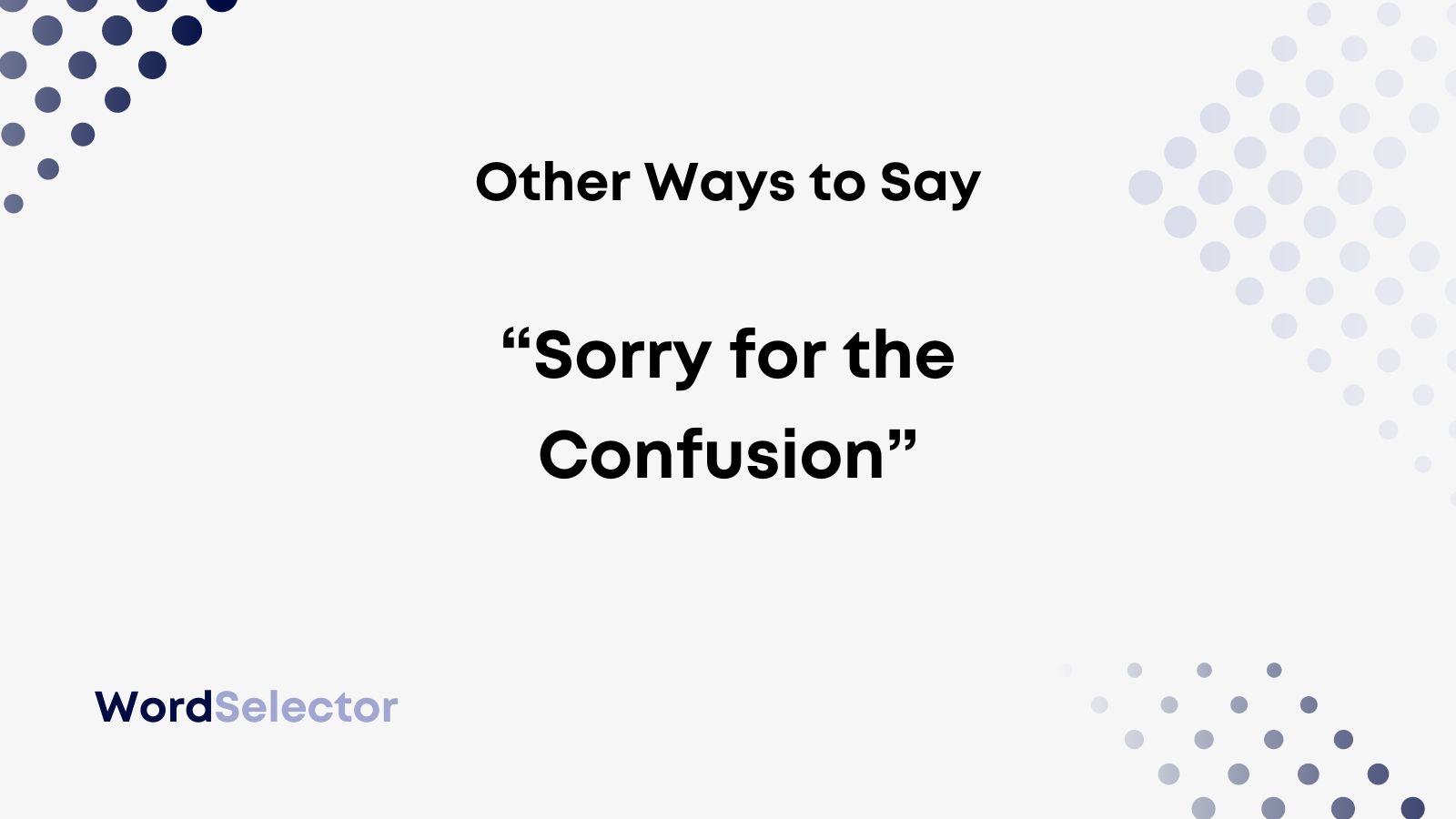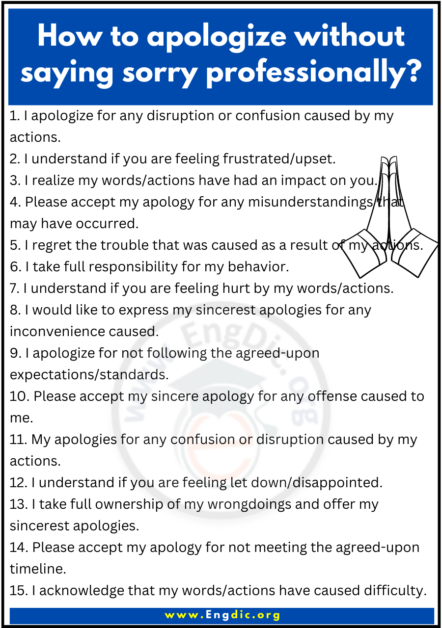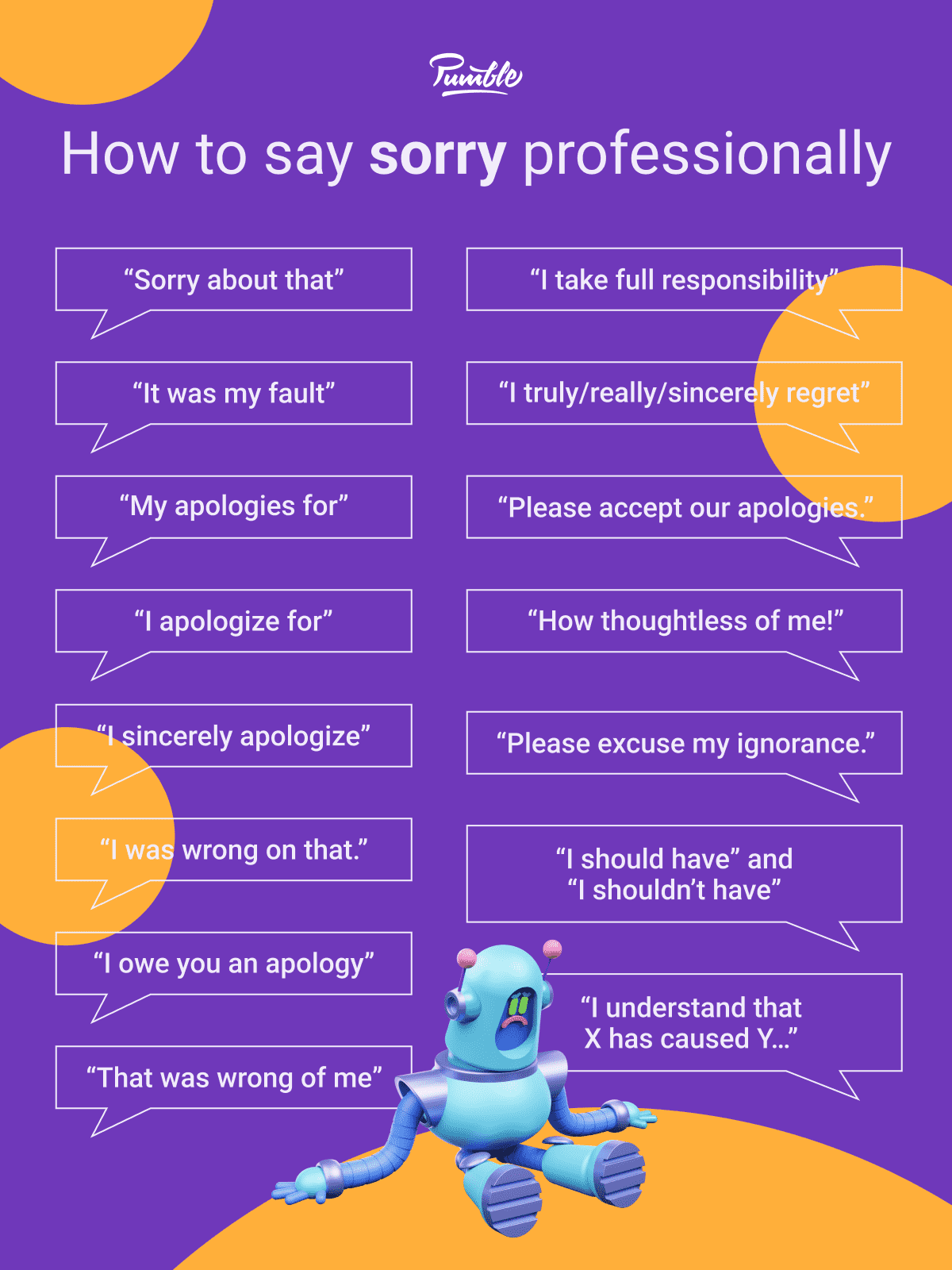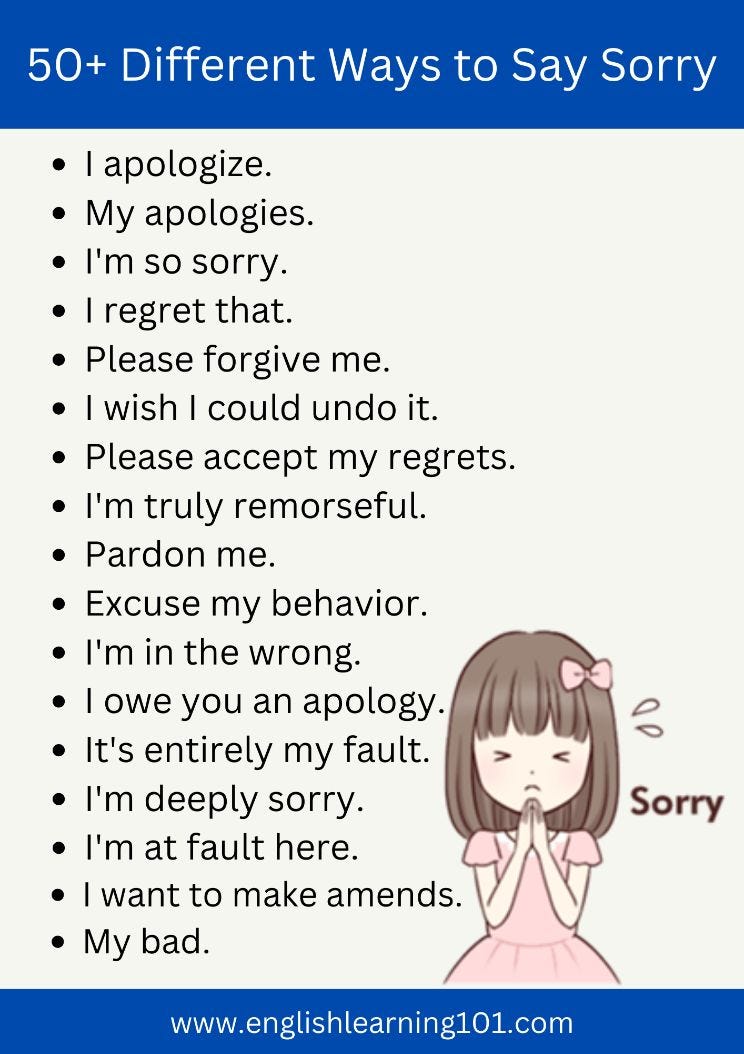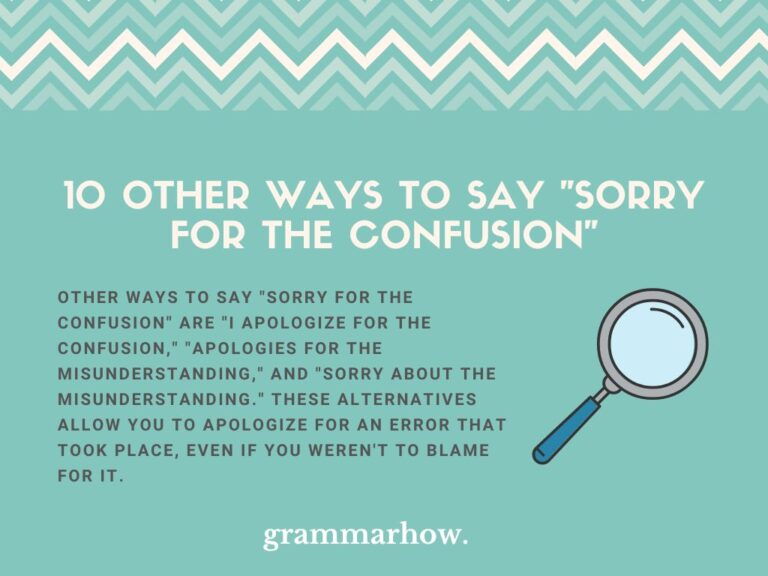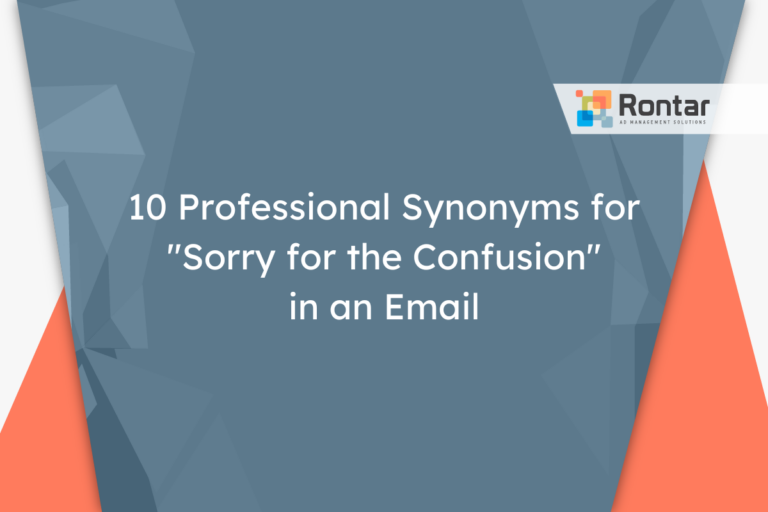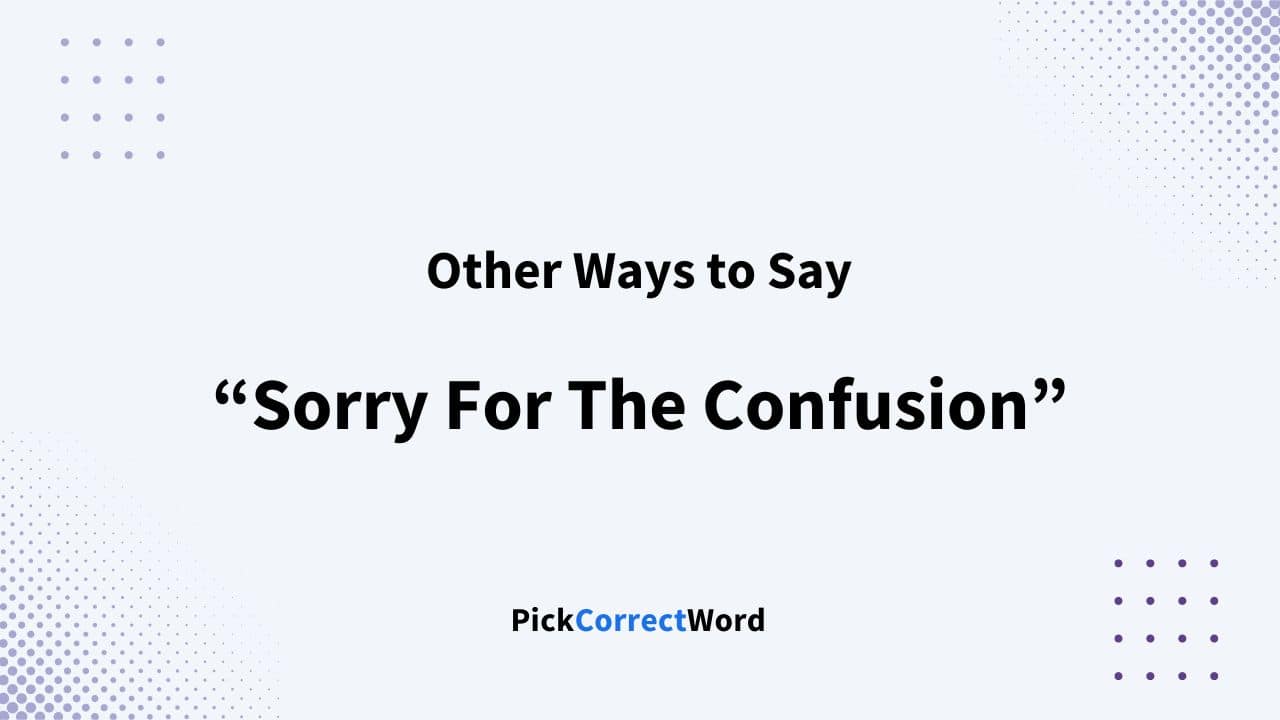How To Say Sorry For The Confusion Without Saying Sorry

In the intricate dance of corporate communications, particularly when navigating turbulent waters of product launches, policy shifts, or service adjustments, the art of conveying regret without uttering the explicit "sorry" has become paramount. Companies are increasingly seeking alternative phrases to address confusion, manage public perception, and maintain a positive brand image, all while sidestepping perceived admissions of fault.
The careful crafting of these non-apology apologies is more than just semantics. It is a strategic communication approach. This trend reflects a nuanced understanding of public relations and legal implications, where a direct apology could be interpreted as an admission of liability, potentially opening the floodgates for lawsuits or reputational damage. This article delves into the motivations behind this trend, the specific language used, and the effectiveness of these strategies in various scenarios.
The Rise of the Non-Apology Apology
Why are companies so hesitant to offer a straightforward apology? Legal experts argue that in today's litigious environment, a simple "sorry" can be twisted and used against an organization in court. This concern extends beyond legal battles; public perception also plays a significant role.
A perceived admission of guilt can trigger a cascade of negative publicity, potentially impacting sales, stock prices, and overall brand reputation. The aim, therefore, is to acknowledge the inconvenience or distress caused to customers or stakeholders without accepting direct responsibility for the situation.
Common Phrases and Their Nuances
Several phrases have emerged as popular alternatives to "sorry." “We acknowledge the frustration this situation has caused” is a frequently used example. This statement recognizes the customer's feelings without admitting fault. Another is “We understand the confusion.”
“We are committed to clarifying any misunderstandings” is another common phrase, focusing on future action rather than dwelling on past missteps. Similarly, “We value your feedback and are working to improve” conveys a commitment to learning and growth without explicitly apologizing for the current situation.
These phrases often are combined with actions aimed at resolving the issue, such as providing additional information, offering compensation, or implementing new policies. This holistic approach seeks to demonstrate goodwill and a commitment to customer satisfaction while mitigating potential legal risks.
Examples in Practice
Consider the case of a technology company facing criticism over a software update that introduced unexpected bugs. Instead of apologizing for the flawed update, the company might issue a statement saying, “We understand that some users are experiencing challenges with the latest software version. Our team is working diligently to resolve these issues and provide a seamless experience."
This statement acknowledges the problem, assures users that a solution is underway, and avoids any direct admission of error. In the financial sector, a bank facing scrutiny over confusing account fees might say, “We recognize that our fee structure could be clearer. We are actively working to simplify our communications and provide greater transparency to our customers."
This approach demonstrates a commitment to improvement and enhanced communication without accepting responsibility for the initial confusion. These examples illustrate the delicate balance companies must strike between addressing concerns and protecting their interests.
Effectiveness and Potential Pitfalls
While these non-apology apologies can be effective in managing legal risks and mitigating immediate negative publicity, their long-term impact on customer trust and loyalty is a subject of debate. Some argue that consumers are increasingly savvy and can see through these carefully worded statements.
A lack of genuine empathy and accountability can further damage the relationship between the company and its customers, leading to lasting reputational harm. A study by the Reputation Institute found that transparency and authenticity are key drivers of consumer trust. Empty apologies can be seen as insincere and manipulative.
On the other hand, a sincere but poorly worded apology could inadvertently open the door to legal action. The challenge, therefore, is to strike a balance between legal prudence and genuine concern. This may involve providing clear explanations, offering tangible solutions, and demonstrating a commitment to preventing similar issues in the future.
Looking Ahead
The use of non-apology apologies is likely to continue as companies navigate the complex landscape of legal liabilities and public perception. However, organizations that prioritize transparency, empathy, and genuine accountability are likely to build stronger, more resilient relationships with their customers.
Future communication strategies may focus on proactively addressing potential sources of confusion before they arise. By investing in clear communication, user-friendly interfaces, and robust customer support, companies can reduce the need for apologies – of any kind. Ultimately, the best strategy is to avoid causing confusion in the first place.
Moving forward, a focus on proactive, transparent, and empathetic communication will be essential for building and maintaining trust. Companies that prioritize these values are more likely to weather storms of criticism. They are also more likely to foster long-term loyalty from their stakeholders.

